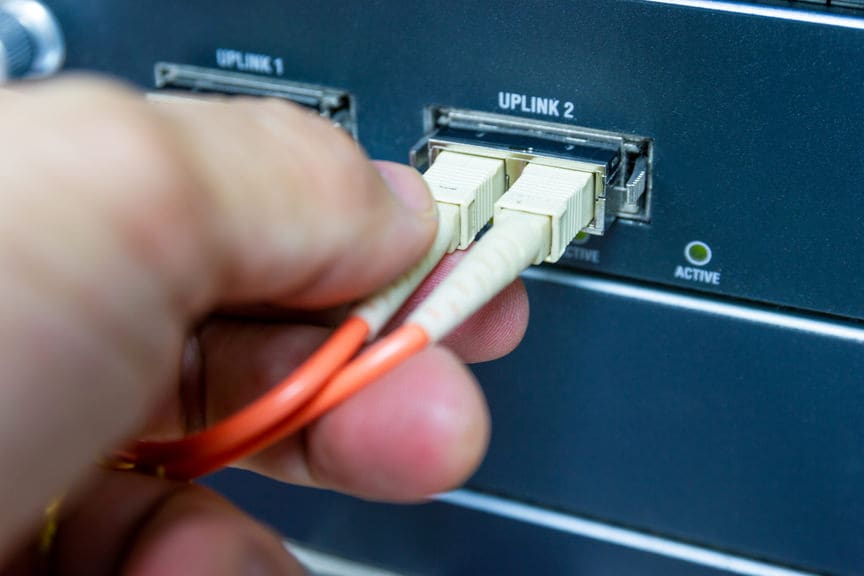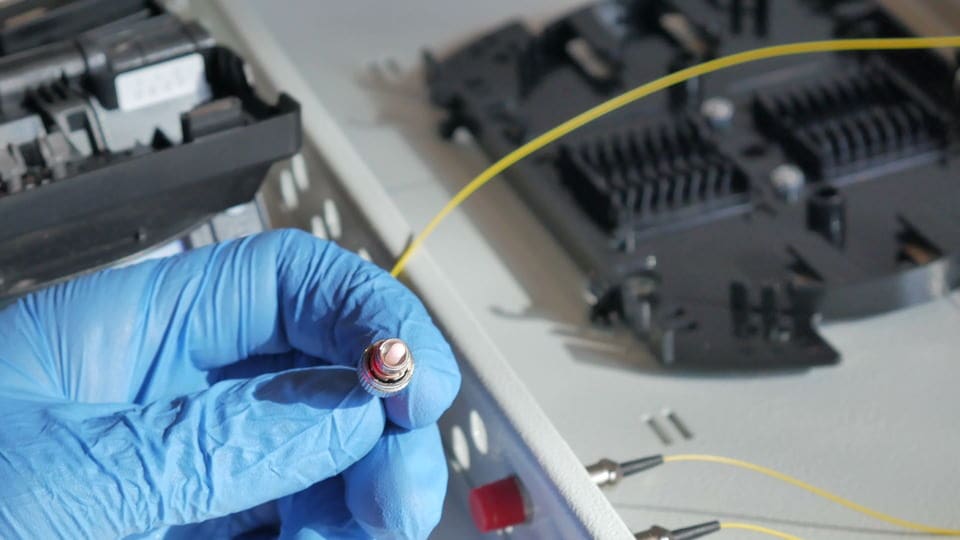Fiber Optic Cabling
What is Fiber Optic Cabling
Since the 1980s, companies have used fiber-optic cabling for their core networks. Fiber-optic cabling offers several advantages over copper cabling and is known as the most cost-efficient and fastest method of communicating information. Installing fiber-optic cables requires professionals with certification.
This technology has sped up processes in science and business for decades. Fiber optics is the technology that transmits light down strands of transparent material, usually glass but sometimes plastic.
This technology transfers information at higher speeds than traditional copper wiring. It is used in communication, lighting, medicine, optics, and also to make sensors.This technology is widely used today for several different applications. It provides many significant advantages for speeding up information and data transfer.
Beginnings of Fiber Optics
Since fiber optics have noise immunity and can travel long distances, its first applications were Industrial links because of how superior the technology was for factory floors.After these applications, the fiber storage area networks’ predecessors in data centers that we use today came out.Today, fiber optics is in most corporate LANs as backbones, connections to engineering and graphic workstations, desktops, and wireless access points.
How Does Fiber Optic Work?
Fiber optic cables pass signals in the form of light pulses through them. Network components use either LED or laser diodes to convert electrical signals into light pulses, which then travel through these fiber optic cables. Then, an optic detector covers the light pulses back into an electrical signal.
There are several components to a fiber optic cable. Fiber optic cables consist of a signal-carrying class core of 5 to 100 microns in diameter. For comparison, a sheet of paper is about 25 microns in diameter, and a human hair is about 75 microns. Cladding, which is pure silica, surrounds the signal-carrying core. The cladding prevents light from escaping the core. Around the cladding are layers of acrylic plastic or coating. There are Kevlar fibers for additional strength and then a PVC jacket. There are several varieties of connectors for fiber optic cabling. Among them are SC, ST, and SMA connectors. ST connectors have a wider install base, and SC connectors are versatile and are currently becoming more popular.
Types of Fiber Optic Cabling
Single Mode Fiber Optic Cabling
Multimode Fiber Optic Cabling
clear signal transmission for about 3000 feet. Longer cable runs will then distort signals because of
modal dispersions. Multimode Fiber Optic cabling has thicker cores of 50, 62.5, or 100 microns. It has enough bandwidth for multiple signals for simultaneous sending and receiving. Each of the signals will follow a separate path through the fiber.
Two Types of Multimode Fibers
Step Index Multimode Fiber
Graded Index Multimode Fiber
Advantages Over Copper Cabling
Fiber optic cables are efficient, offering data transmission rates of 100 Gbps or higher. They also have lower attenuation, which allows signals to travel over distances that measure in kilometers. Often, fiber optic cabling is in campus-wide computer networks, as long cabling between buildings and local area connection LAN to highly populated servers or high-speed workstations.


